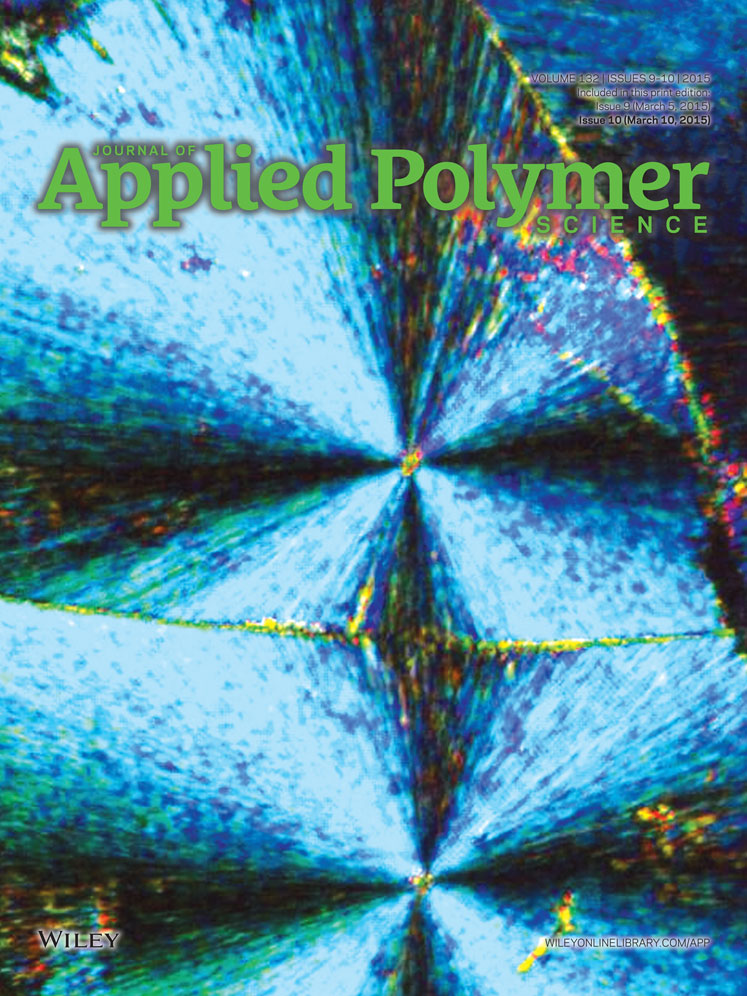Effective thermal conductivity and thermal properties of phthalonitrile-terminated poly(arylene ether nitriles) composites with hybrid functionalized alumina
ABSTRACT
A polymer-based thermal conductive composite has been developed. It is based on a dispersion of micro- and nanosized alumina (Al2O3) in the phthalonitrile-terminated poly (arylene ether nitriles) (PEN-t-ph) via solution casting method. The Al2O3 with different particle sizes were functionalized with phthalocyanine (Pc) which was used as coupling agent to improve the compatibility of Al2O3 and PEN-t-ph matrix. The content of microsized functionalized Al2O3 (m-f-Al2O3) maintained at 30 wt % to form the main thermally conductive path in the composites, and the nanosized functionalized Al2O3 (n-f-Al2O3) act as connection role to provide additional channels for the heat flow. The thermal conductivity of the f-Al2O3/PEN-t-ph composites were investigated as a function of n-f-Al2O3 loading. Also, a remarkable improvement of the thermal conductivity from 0.206 to 0.467 W/mK was achieved at 30 wt % n-f-Al2O3 loading, which is nearly 2.7-fold higher than that of pure PEN-t-ph polymer. Furthermore, the mechanical testing reveals that the tensile strength increased from 99 MPa for pure PEN-t-ph to 105 MPa for composites with 30 wt % m-f-Al2O3 filler loading. In addition, the PEN-t-ph composites possess excellent thermal properties with glass transition temperature (Tg) above 184°C, and initial degradation temperature (Tid) over 490°C. © 2014 Wiley Periodicals, Inc. J. Appl. Polym. Sci. 2015, 132, 41595.




